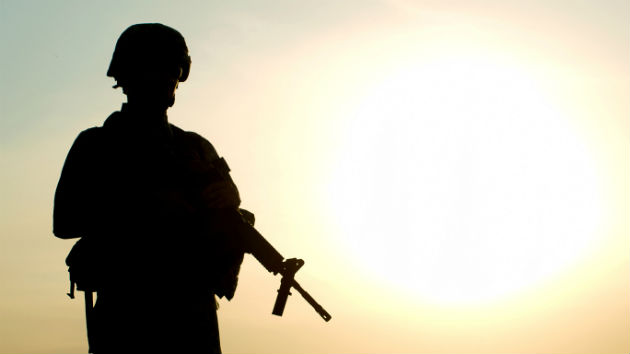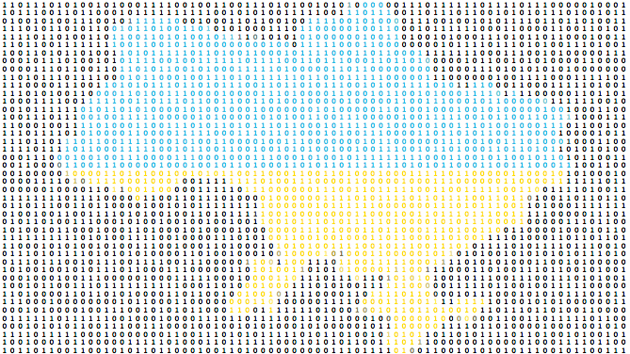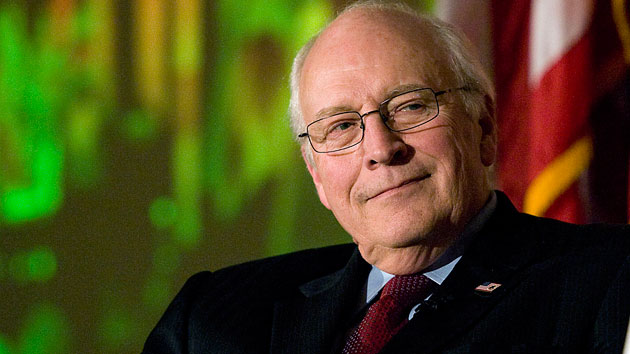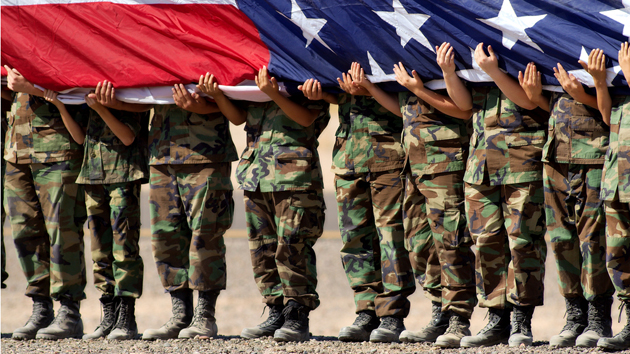
Oleg Zabielin/Thinkstock
This story first appeared on the TomDispatch website.
Lion Forward Teams? Echo Casemate? Juniper Micron?
You could be forgiven if this jumble of words looks like nonsense to you. It isn’t. It’s the language of the US military’s simmering African interventions; the patois that goes with a set of missions carried out in countries most Americans couldn’t locate on a map; the argot of conflicts now primarily fought by proxies and a former colonial power on a continent that the US military views as a hotbed of instability and that hawkish pundits increasingly see as a growth area for future armed interventions.
![]() Since 9/11, the US military has been making inroads in Africa, building alliances, facilities, and a sophisticated logistics network. Despite repeated assurances by US Africa Command (AFRICOM) that military activities on the continent were minuscule, a 2013 investigation by TomDispatch exposed surprisingly large and expanding US operations—including recent military involvement with no fewer than 49 of 54 nations on the continent. Washington’s goal continues to be building these nations into stable partners with robust, capable militaries, as well as creating regional bulwarks favorable to its strategic interests in Africa. Yet over the last years, the results have often confounded the planning—with American operations serving as a catalyst for blowback (to use a term of CIA tradecraft).
Since 9/11, the US military has been making inroads in Africa, building alliances, facilities, and a sophisticated logistics network. Despite repeated assurances by US Africa Command (AFRICOM) that military activities on the continent were minuscule, a 2013 investigation by TomDispatch exposed surprisingly large and expanding US operations—including recent military involvement with no fewer than 49 of 54 nations on the continent. Washington’s goal continues to be building these nations into stable partners with robust, capable militaries, as well as creating regional bulwarks favorable to its strategic interests in Africa. Yet over the last years, the results have often confounded the planning—with American operations serving as a catalyst for blowback (to use a term of CIA tradecraft).
A US-backed uprising in Libya, for instance, helped spawn hundreds of militias that have increasingly caused chaos in that country, leading to repeated attacks on Western interests and the killing of the US ambassador and three other Americans. Tunisia has become ever more destabilized, according to a top US commander in the region. Kenya and Algeria were hit by spectacular, large-scale terrorist attacks that left Americans dead or wounded. South Sudan, a fledgling nation Washington recently midwifed into being that has been slipping into civil war, now has more than 870,000 displaced persons, is facing an imminent hunger crisis, and has recently been the site of mass atrocities, including rapes and killings. Meanwhile, the US-backed military of Mali was repeatedly defeated by insurgent forces after managing to overthrow the elected government, and the US-supported forces of the Central African Republic (CAR) failed to stop a ragtag rebel group from ousting the president.
In an effort to staunch the bleeding in those two countries, the US has been developing a back-to-the-future military policy in Africa—making common cause with one of the continent’s former European colonial powers in a set of wars that seem to be spreading, not staunching violence and instability in the region.
The French Connection
After establishing a trading post in present-day Senegal in 1659, France gradually undertook a conquest of West Africa that, by the early twentieth century, left it with a vast colonial domain encompassing present-day Burkina Faso, Benin, Chad, Guinea, Ivory Coast, Mali, Niger, and Senegal, among other places. In the process, the French used Foreign Legionnaires from Algeria, Goumiers from Morocco, and Tirailleurs from Senegal, among other African troops, to bolster its ranks. Today, the US is pioneering a twenty-first-century brand of expeditionary warfare that involves backing both France and the armies of its former colonial charges as Washington tries to accomplish its policy aims in Africa with a limited expenditure of blood and treasure.
In a recent op-ed for the Washington Post, President Barack Obama and French President François Hollande outlined their efforts in glowing terms:
“In Mali, French and African Union forces—with US logistical and information support—have pushed back al-Qaeda-linked insurgents, allowing the people of Mali to pursue a democratic future. Across the Sahel, we are partnering with countries to prevent al-Qaeda from gaining new footholds. In the Central African Republic, French and African Union soldiers—backed by American airlift and support—are working to stem violence and create space for dialogue, reconciliation, and swift progress to transitional elections.”
Missing from their joint piece, however, was any hint of the Western failures that helped facilitate the debacles in Mali and the Central African Republic, the continued crises plaguing those nations, or the potential for mission creep, unintended consequences, and future blowback from this new brand of coalition warfare. The US military, for its part, isn’t saying much about current efforts in these two African nations, but official documents obtained by TomDispatch through the Freedom of Information Act offer telling details, while experts are sounding alarms about the ways in which these military interventions have already fallen short or failed.
Operation Juniper Micron
After 9/11, through programs like the Pan-Sahel Initiative and the Trans-Saharan Counterterrorism Partnership, the US has pumped hundreds of millions of dollars into training and arming the militaries of Mali, Niger, Chad, Mauritania, Nigeria, Senegal, Morocco, Algeria, and Tunisia in order to promote “stability.” In 2013, Captain J. Dane Thorleifson, the outgoing commander of an elite, quick-response force known as Naval Special Warfare Unit 10, described such efforts as training “proxy” forces in order to build “critical host nation security capacity; enabling, advising, and assisting our African CT [counterterror] partner forces so they can swiftly counter and destroy al-Shabab, AQIM [Al-Qaeda in the Islamic Maghreb], and Boko Haram.” In other words, the US military is in the business of training African armies as the primary tactical forces combatting local Islamic militant groups.
The first returns on Washington’s new and developing form of “light footprint” warfare in Africa have hardly been stellar. After US and French forces helped to topple Libyan dictator Muammar Gaddafi in 2011, neighboring Mali went from bulwark to basket case. Nomadic Tuareg fighters looted the weapons stores of the Gaddafi regime they had previously served, crossed the border, and began taking over northern Mali. This, in turn, prompted a US-trained officer—a product of the Pan-Sahel Initiative—to stage a military coup in the Malian capital, Bamako, and oust the democratically elected president of that country. Soon after, the Tuareg rebels were muscled aside by heavily-armed Islamist rebels from the homegrown Ansar al-Dine movement as well as al-Qaeda in the Islamic Maghreb, Libya’s Ansar al-Shariah, and Nigeria’s Boko Haram, who instituted a harsh brand of Shariah law, creating a humanitarian crisis that caused widespread suffering and sent refugees streaming from their homes.
In January 2013, former colonial power France launched a military intervention, code-named Operation Serval, to push back and defeat the Islamists. At its peak, 4,500 French troops were fighting alongside West African forces, known as the African-led International Support Mission in Mali (AFISMA), later subsumed into a U.N.-mandated Multidimensional Integrated Stabilization Mission in Mali (MINUSMA). The AFISMA force, as detailed in an official US Army Africa briefing on training missions obtained by TomDispatch, reads like a who’s who of American proxy forces in West Africa: Niger, Guinea, Burkina Faso, Côte d’Ivoire, Togo, Senegal, Benin, Liberia, Chad, Nigeria, Gambia, Ghana, and Sierra Leone.
Click here to see a larger version
US Army Africa briefing slide detailing US efforts to aid the African-led International Support Mission in Mali (AFISMA).
Under the moniker Juniper Micron, the US military supported France’s effort, airlifting its soldiers and materiel into Mali, flying refueling missions in support of its airpower, and providing “intelligence, surveillance, and reconnaissance” (ISR) through drone operations out of Base Aerienne 101 at Diori Hamani International Airport in Niamey, the capital of neighboring Niger. The US Army Africa AFISMA document also makes reference to the deployment to Chad of an ISR liaison team with communications support. Despite repeated pledges that it would put no boots on the ground in troubled Mali, in the spring of 2013, the Pentagon sent a small contingent to the US Embassy in Bamako and others to support French and MINUSMA troops.
After issuing five media releases between January and March of 2013 about efforts to aid the military mission in Mali, AFRICOM simply stopped talking about it. With rare exceptions, media coverage of the operation also dried up. In June, at a joint press conference with President Obama, Senegal’s President Macky Sall did let slip that the US was providing “almost all the food and fuel used by MINUSMA” as well as “intervening to assist us with the logistics after the French response.”
 A January 2014 Stars and Stripes article mentioned that the US air refueling mission supporting the French, run from a US airbase in Spain, had already “distributed 15.6 million gallons of fuel, logging more than 3,400 flying hours” and that the effort would continue. In February, according to military reports, elements of the Air Force’s 351st Expeditionary Refueling Squadron delivered their one millionth pound of fuel to French fighter aircraft conducting operations over Mali. A December 2013 briefing document obtained by TomDispatch also mentions 181 US troops, the majority of them Air Force personnel, supporting Operation Juniper Micron.
A January 2014 Stars and Stripes article mentioned that the US air refueling mission supporting the French, run from a US airbase in Spain, had already “distributed 15.6 million gallons of fuel, logging more than 3,400 flying hours” and that the effort would continue. In February, according to military reports, elements of the Air Force’s 351st Expeditionary Refueling Squadron delivered their one millionth pound of fuel to French fighter aircraft conducting operations over Mali. A December 2013 briefing document obtained by TomDispatch also mentions 181 US troops, the majority of them Air Force personnel, supporting Operation Juniper Micron.
Eager to learn where things stood today, I asked AFRICOM spokesman Benjamin Benson about the operation. “We’re continuing to support and enable the French and international partners to confront AQIM and its affiliates in Mali,” he told me. He then mentioned four key current mission sets being carried out by US forces: information-sharing, intelligence and reconnaissance, planning and liaison teams, and aerial refueling and the airlifting of allied African troops.
Click here to see a larger version
December 2013 US military document detailing American efforts to support French military operations in Mali and Central African Republic.
US Army Africa documents obtained by TomDispatch offer further detail about Operation Juniper Micron, including the use of Lion Forward Teams in support of that mission. I asked Benson for information about these small detachments that aided the French effort from Chad and from within Mali itself. “I don’t have anything on that,” was all he would say. A separate briefing slide, produced for an Army official last year, noted that the US military provided support for the French mission from Rota and Moron, Spain; Ramstein, Germany; Sigonella, Italy; Kidal and Bamako, Mali; Niamey, Niger; Ouagadougou, Burkina Faso; and N’Djamena, Chad. Benson refused to offer information about specific activities conducted from these locations, preferring to speak about air operations from unspecified locations and only in generalities.
Click here to see a larger version
Official briefing slide with details on US training for Chad and Guinea—”troop contributing countries” aiding the US-supported military mission in Mali.
Official military documents obtained by TomDispatch detail several US missions in support of proxy forces from the Multidimensional Integrated Stabilization Mission in Mali, including a scheduled eight weeks of pre-deployment training for troops from Niger in the summer of 2013, five weeks for Chadian forces in the autumn, and eight weeks in the autumn as well for Guinean soldiers, who would be sent into the Malian war zone. I asked Benson about plans for the training of African forces designated for MINUSMA in 2014. “In terms of the future on that… I don’t know,” was all he would say.
Another official briefing slide produced by US Army Africa notes, however, that from January through March 2014, the US planned to send scores of trainers to prepare 1,400 Chadian troops for missions in Mali. Over the same months, other US personnel were to team up with French military trainers to ready an 850-man Guinean infantry force for similar service. Requests for further information from the French military about this and other missions were unanswered before this article went to press.
Operation Echo Casemate
Last spring, despite years of US assistance, including support from Special Operations forces advisors, the Central African Republic’s military was swiftly defeated and the country’s president was ousted by Seleka, a mostly Muslim rebel group. Months of violence followed, with Seleka forces involved in widespread looting, rape, and murder. The result was growing sectarian clashes between the country’s Muslim and Christian communities and the rise of Christian “anti-balaka” militias. (“Balaka” means machete in the local Sango language.) These militias have, in turn, engaged in an orgy of atrocities and ethnic cleansing directed against Muslims.
In December, backed by a United Nations Security Council resolution and in a bid to restore order, France sent troops into its former colony to bolster peacekeepers from the African-led International Support Mission in the Central African Republic (MISCA). As with the Mali mission, the US joined the effort, pledging up to $60 million in military aid, pouring money into a trust fund for MISCA, and providing airlift services, as well as training African forces for deployment in the country.
Dubbed Echo Casemate, the operation—staged out of Burundi and Uganda—saw the US military airlift hundreds of Burundian troops, tons of equipment, and more than a dozen military vehicles into that strife-torn land in just the first five days of the operation, according to an AFRICOM media release. In January, at France’s request, the US began airlifting a Rwandan mechanized battalion and 1,000 tons of their gear in from that country’s capital, Kigali, via a staging area in Entebbe, Uganda (where the US maintains a “cooperative security location” and from which US contractors had previously flown secret surveillance missions). The most recent airlift effort took place on February 6th, according to Benson. While he said that no other flights are currently scheduled, he confirmed that Echo Casemate remains an ongoing operation.
Asked about US training efforts, Benson was guarded. “I don’t have that off the top of my head,” he told me. “We do training with a lot of different countries in Africa.” He offered little detail about the size and scope of the US effort, but a December 2013 briefing document obtained by TomDispatch mentions 84 US personnel, the majority of them based in Burundi, supporting Operation Echo Casemate. The New York Times recently reported that the US “refrained from putting American boots on the ground” in the Central African Republic, but the document clearly indicates that a Lion Forward Team of Army personnel was indeed sent there.
Another US Army Africa document produced late last year noted that the US provided military support for the French mission in that country from facilities in Germany, Italy, Uganda, Burundi, and the Central African Repubilc itself. It mentions plans to detail liaison officers to the MISCA mission and the Centre de planification et de conduite des opérations (the Joint Operations, Planning, and Command and Control Center) in Paris.
As US personnel deploy to Europe as part of Washington’s African wars, additional European troops are heading for Africa. Last month, another of the continent’s former colonial powers, Germany, announced that some of its troops would be sent to Mali as part of a Franco-German brigade under the aegis of the European Union (EU) and would also aid in supporting an EU “peacekeeping mission” in the Central African Republic. Already, a host of other former imperial powers on the continent—including Belgium, Italy, the Netherlands, Portugal, Spain, and the United Kingdom –are part of a European Union training mission to school the Malian military. In January, France announced that it was reorganizing its roughly 3,000 troops in Africa’s Sahel region to reinforce a logistical base in Abidjan, the capital of Côte d’Ivoire, transform N’Djamena, Chad, into a hub for French fighter jets, concentrate special operations forces in Burkina Faso, and run drone missions out of Niamey, Niger (already a US hub for such missions).
Scrambling Africa
Operations by French and African forces, bolstered by the US military, beat back the Islamic militants in Mali and allowed presidential elections to be held. At the same time, the intervention caused a veritable terror diaspora that helped lead to attacks in Algeria, Niger, and Libya, without resolving Mali’s underlying instability.
Writing in the most recent issue of the CTC Sentinel, the official publication of the Combating Terrorism Center at West Point, analyst Bruce Whitehouse points out that the Malian government has yet to reassert its authority in the north of the country, reform its armed forces, tackle graft, or strengthen the rule of law: “Until major progress is made in each of these areas, little can be done to reduce the threat of terrorism… the underlying causes of Mali’s 2012 instability—disaffection in the north, a fractured military, and systemic corruption—have yet to be fully addressed by the Malian government and its international partners.”
The situation may be even worse in the Central African Republic. “When France sent troops to halt violence between Christians and Muslims in Central African Republic,” John Irish and Daniel Flynn of Reuters recently reported, “commanders named the mission Sangaris after a local butterfly to reflect its short life. Three months later, it is clear they badly miscalculated.” Instead, violence has escalated, more than one million people have been displaced, tens of thousands have been killed, looting has occurred on a massive scale, and last month US Director of National Intelligence James Clapper informed Congress that “much of the country has devolved into lawlessness.”
It is also quickly becoming a regional arms-smuggling hot spot. With millions of weapons reportedly unaccounted for as a result of the pillaging of government armories, it’s feared that weaponry will find its way into other continental crisis zones, including Nigeria, Libya, and the Democratic Republic of Congo.
In addition, the coalition operation there has failed to prevent what, after a visit to the largely lawless capital city of Bangui last month, the United Nations High Commissioner for Refugees Antonio Guterres called “ethnic-religious cleansing.” Amnesty International found much the same. “Once vibrant Muslim communities in towns and cities throughout the country have been completely destroyed as all Muslim members have either been killed or driven away. Those few left behind live in fear that they will be attacked by anti-balaka groups in their towns or on the roads,” the human rights group reported. “While an African Union peacekeeping force, the African-led International Support Mission to the Central African Republic (MISCA), supported by French troops, has been deployed in the country since early December 2013, they have failed to adequately protect civilians and prevent the current ethnic cleansing from taking place.”
French Wine in New Bottles?
“We’re not involved with the fighting in Mali,” AFRICOM spokesman Benjamin Benson told me, emphasizing that the US military was not engaged in combat there. But Washington is increasingly involved in the growing wars for West and Central Africa. And just about every move it has made in the region thus far has helped spread conflict and chaos, while contributing to African destabilization. Worse yet, no end to this process appears to be in sight. Despite building up the manpower of its African proxies and being backed by the US military’s logistical might, France had not completed its mission in Mali and will be keeping troops there to conduct counterrorism operations for the foreseeable future.
Similarly, the French have also been forced to send reinforcements into the Central African Republic (and the U.N. has called for still more troops), while Chadian MISCA forces have been repeatedly accused of attacking civilians. In a sign that the US-backed French military mission to Africa could spread, the Nigerian government is now requesting French troops to help it halt increasingly deadly attacks by Boko Haram militants who have gained strength and weaponry in the wake of the unrest in Libya, Mali, and the Central African Republic (and have reportedly also spread into Niger, Chad, and Cameroon). On top of this, Clapper recently reported that Chad, Niger, Mali, and Mauritania were endangered by their support of the French-led effort in Mali and at risk of increased terror attacks “as retribution.”
Still, this seems to have changed little for the director of national intelligence. “Leveraging and partnering with the French is a way to go,” he told Congress last month. “They have insight and understanding and, importantly, a willingness to use the forces they have there now.”
France has indeed exhibited a longstanding willingness to use military force in Africa, but what “insight and understanding” its officials gleaned from this experience is an open question. One hundred and sixteen years after it completed its conquest of what was then French Sudan, France’s forces are again fighting and dying on the same fields of battle, though today the country is called Mali. Again and again during the early 20th century, France launched military expeditions, including during the 1928-1931 Kongo-Wara rebellion, against indigenous peoples in French Equatorial Africa. Today, France’s soldiers are being killed on the same ground in what’s now known as the Central African Republic. And it looks as if they may be slogging on in these nations, in partnership with the US military, for years to come, with no evident ability to achieve lasting results.
A new type of expeditionary warfare is underway in Africa, but there’s little to suggest that America’s backing of a former colonial power will ultimately yield the long-term successes that years of support for local proxies could not. So far, the US has been willing to let European and African forces do the fighting, but if these interventions drag on and the violence continues to leap from country to country as yet more militant groups morph and multiply, the risk only rises of Washington wading ever deeper into post-colonial wars with an eerily colonial look. “Leveraging and partnering with the French” is the current way to go, according to Washington. Just where it’s going is the real question.
Nick Turse is the managing editor of TomDispatch.com and a fellow at the Nation Institute. He recently won the 2014 Izzy Award for “outstanding achievement in independent media” for his reporting on civilian war casualties from Vietnam to Afghanistan. Turse’s pieces have appeared in the New York Times, Los Angeles Times, and the Nation, at the BBC, and regularly at TomDispatch. He is the author most recently of the New York Times bestseller Kill Anything That Moves: The Real American War in Vietnam (just out in paperback). You can catch his conversation with Bill Moyers about that book by clicking here.
Follow TomDispatch on Twitter and join us on Facebook and Tumblr. Check out the newest Dispatch Book, Ann Jones’s They Were Soldiers: How the Wounded Return From America’s Wars—The Untold Story.To stay on top of important articles like these, sign up to receive the latest updates from TomDispatch.com here.
















